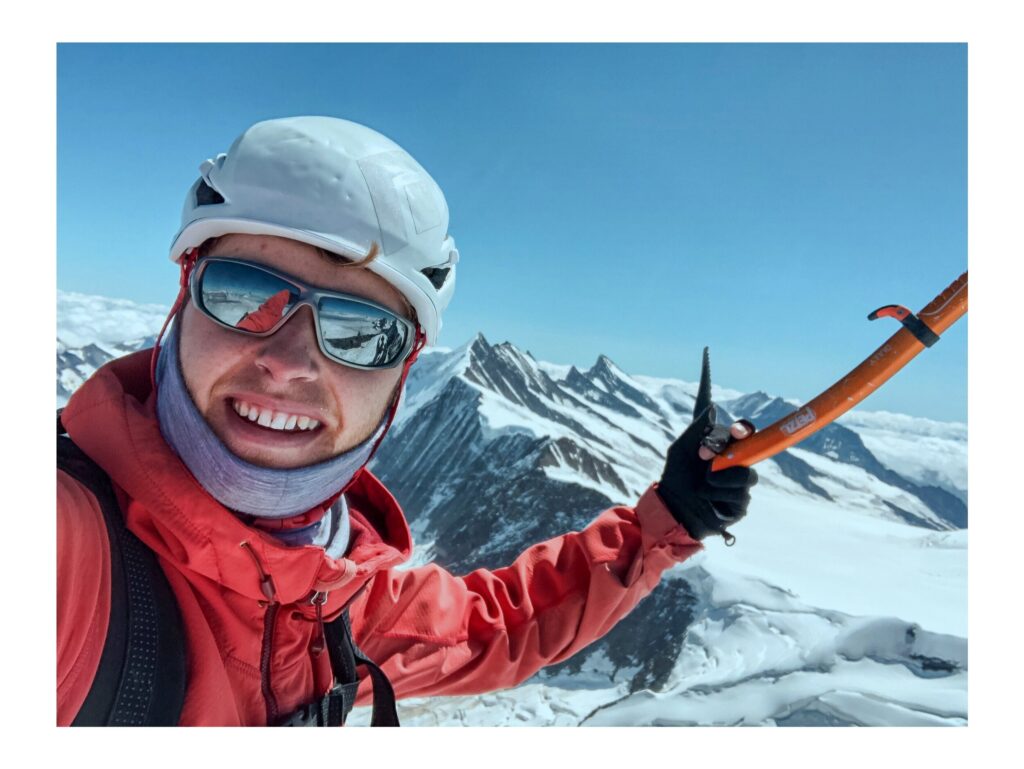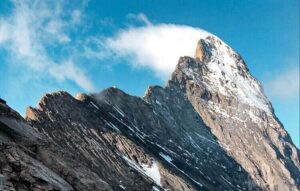Three days ago, I sat alone beneath the most famous piece of rock and ice in European climbing history – the Eiger. Few mountains hold such a reputation as the Eiger. A deep history, rich with tales of death and glory, has shrouded the peak in mystery amongst the public; and allure among climbers.
The Eiger, a mountain with a reputation
Remarkably, its fame had even reached me as a fourteen-year-old boy living in a small coal-mining town down on the other side of the world. Sifting through a dusty collection of my grandad’s old war books, I came across “The Beckoning Silence” – a book by British climber Joe Simpson, recounting his adventures on the mountain. It’s possible the very pages of this book, full of trepidation and excitement, sparked my motivation to venture into the craggy peaks of New Zealand five years later.
Arriving in Europe, I wasn’t bothered by the busy streets of Paris, the white sands of Greece, or the ruins of Rome. My plane landed. I collected my bags and travelled directly into the mountains, where I have since remained.
Two years and a blur of summits later, something was nagging that remained high on my itinerary: to meet the famous Eiger.
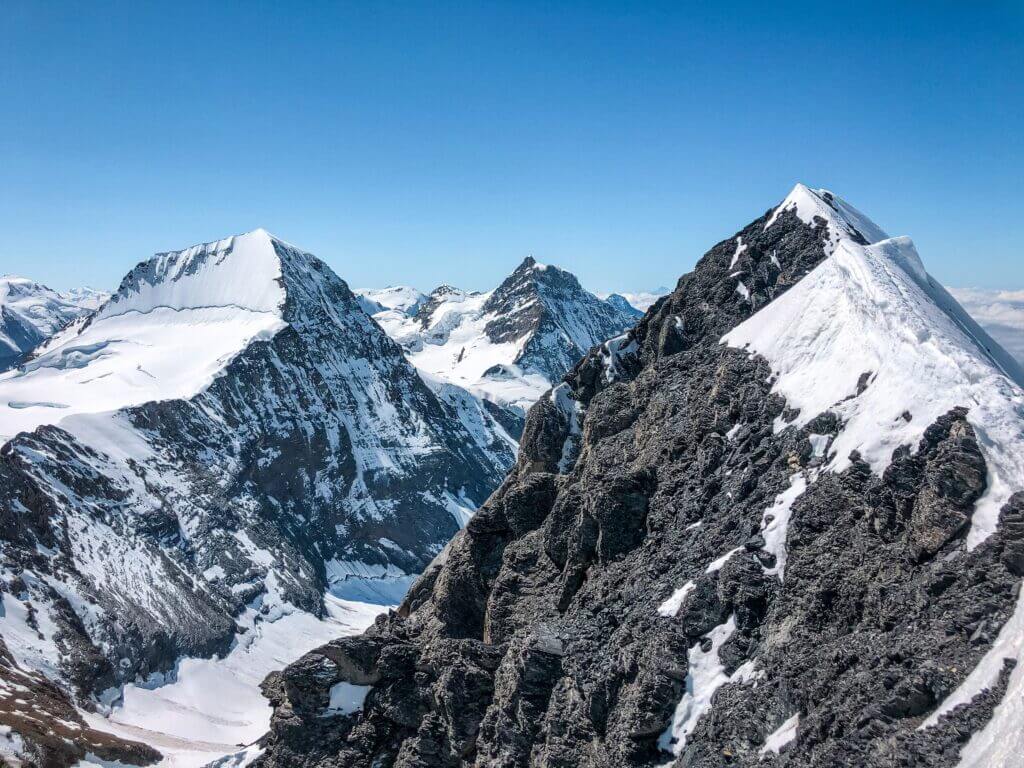
En route for the Eiger: the Mitellegi
The obvious choice for alpinists is the classic North Face. But, unfortunately, it wasn’t in condition last season, and now that it was summer and I was alone, it wasn’t an option.
I checked out the easier Mitellegi. The East Ridge is much easier and still a classic of the Alps. It looked like an excellent solo trip.
Studying the topo, I couldn’t help but notice the ridge began another two kilometres from where the route started. After a quick google search, I found the Mittellegi Integral, a longer and slightly more difficult start to the tour. The entire East Ridge is four kilometres of an exposed ridge and steep gendarme scrambling. Now we’re are talking!
As for the descent, the South ridge down to the Eismeer is most common. At 3000 meters, the Eismeer is the second-highest train station in Europe. Tunnelling through the Eiger and back to Grindelwald is an impressive engineering feat, especially for 1905. But sitting on a train isn’t the most inspiring way to finish an alpine climb. The descent is half of the adventure, to cut that out is giving up a big piece of the experience.
Already attempting the complete East ridge, I figured why not go up and over? The somewhat forgotten West Ridge looked steep but straightforward. It follows a loose, broad flank for about 2000 meters to the Alp below.
A traverse of the Eiger, I was intrigued. There was enough uncertainty and aesthetic to make it an appropriate first meeting with the mountain I had heard so much about.
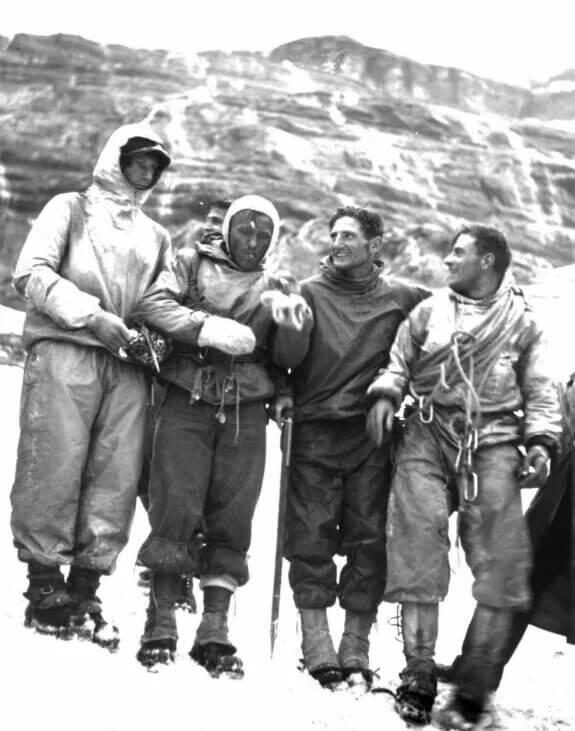
For the last two summers, I have been working at a Käserei in the small village of Engelberg. Making cheese in Switzerland, how cliche. However, while working for Walter, a local Swiss cheesemaker, I’ve learnt that making cheese is not quite as idyllic as I might have assumed. After a physical day making cheddar, I was looking forward to resting on the train while passing through the quaint villages and Swiss countryside on my way to Grindelwald.
The Eiger was shrouded in clouds when I arrived. I walked around Grindelwald gathering last-minute necessities, stealing a glimpse of the legendary face every so often.
I bivvied on Alpigen, an alp below the North Face. It was only another three hours from here to a small hut below Ostegg, but I preferred to save all of the climbing for the following day. However, it took me unusually long to go to sleep that night. I had a horrible feeling I was missing something. Could there be a flaw in my plan, but because I was alone, there was no one to tell me so?
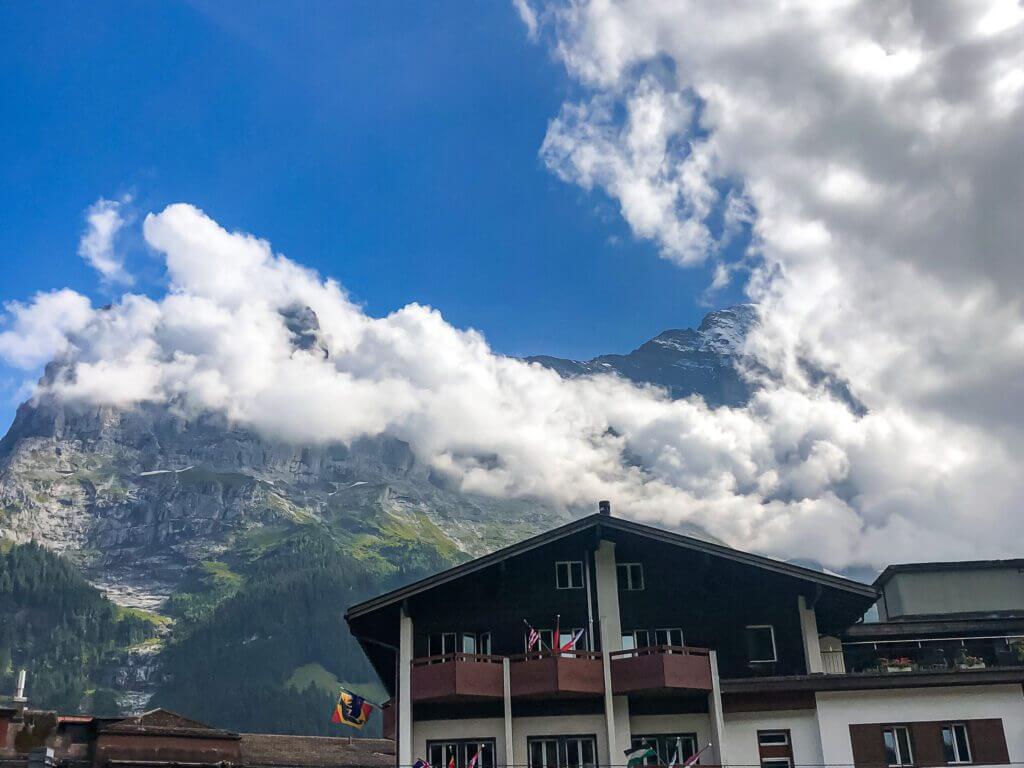
First part:
I woke up before my alarm. I felt well-rested, so at 2 am, I flicked on the stove and started preparing my pack. Adding together all of the route timings gave me over 20 hours of nonstop travel, putting me on the summit around 7 pm. Figuring I was descending the west ridge in the dark, I packed an extra puffy and the stove and set off, leaving behind my anxiety from the night before and looking forward to what the day would bring.
Soon I was at the Ostegg hut. Thick morning fog hung in the beam of my headtorch, making it hard to see more than a few meters. It rained on and off. Following my nose through the mist, I passed the occasional cairn as I clambered over scree and around bluffs. Eventually, I took a wrong turn and ended up in a loose gully. Climbing the cold, slimy walls in the dark felt like crawling through a sewer pipe. Then, I became aware of a weird noise growing from a hole in the corner. I continued up until suddenly, a giant bird burst from the crack! Flapping around like a drunken pigeon, it gave me such a fright that I nearly jumped from the gully. After it flew away, I carried on towards the main ridge, my laughter echoing off the walls.
Once I reached the ridge, I was above the clouds. The sun was creeping toward the horizon, and the bitter dark of night slowly surrendered to the cool blues and purples of dawn. There was a light breeze. It pierced through my skin, damp from sweat and rain whenever I stopped moving.
I could see a distinct hole in the mountain ahead of me. It was the so-called letterbox – a short cave tunnelling through to the other side of the ridge.
On my stomach, I pushed my pack ahead of me and wiggled through the hole. There was a short traverse to the base of a corner above the collapsing Ishmeer glacier. I studied the corner and slipped my rock shoes on before attaching my haul line to the rucksack. Just before leaving the ground, I noticed something a little down the face. It looked like a piece of sling from an axe or a pole. I scrambled down to investigate. Sure enough, it was a Black Diamond carbon fibre pole, precisely the model I had been holding off buying. Someone must have dropped it on the crux and figured it had fallen hundreds of meters to the glacier below. I stashed it in my bag, thinking it might come in handy later.
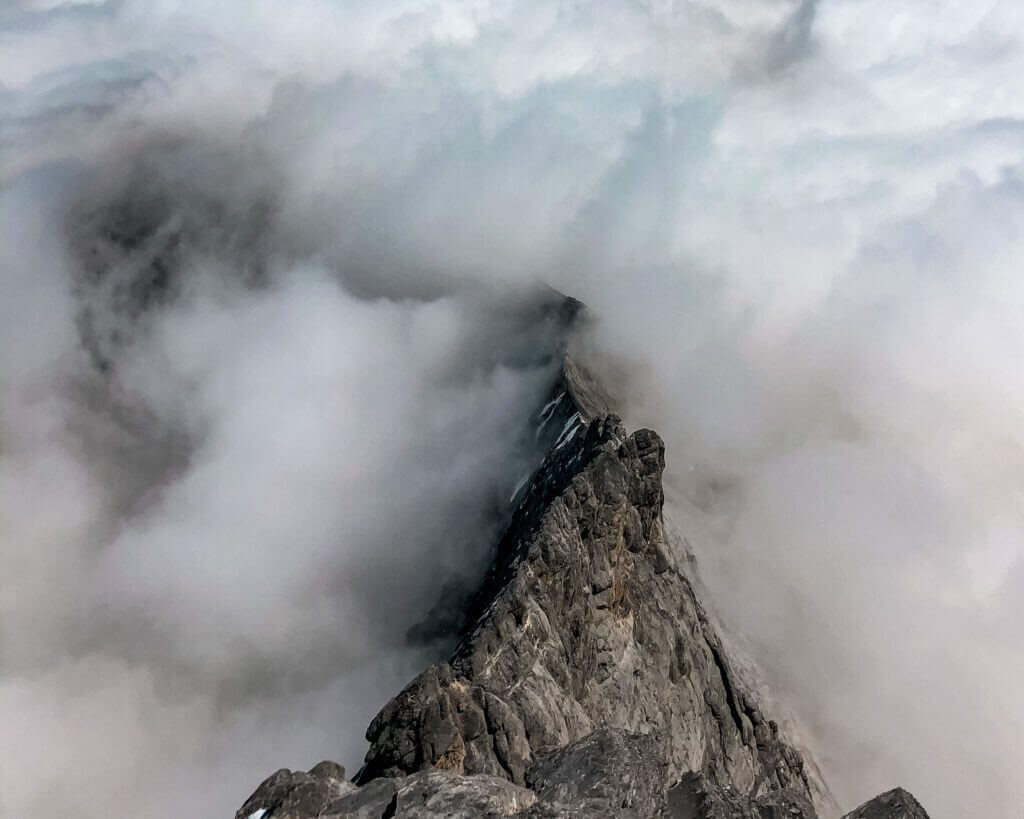
I started up the first pitch, moving with care and testing each hold as I went. There is a method, a sort of conversation that takes place when climbing with so much attentiveness. I question every obscure rock with a tap of the foot or hand, waiting for a reply. Movement? Are you a friend or a foe? Slowly I weight each hold, watching for any sign of weakness, backed up by another three points on rock, all of which have undergone the same procedure.
Reaching an anchor, I hauled up my rucksack and decided to wear it as the climbing was not so severe, and the rock was already dry from the morning’s rain. After the corner, I stuffed my rock shoes in the bottom of my pack and put my boots back on. I debated bringing climbing shoes, but I was glad to have them. The climbing would have been okay in boots, but the extra security was worth the weight.
I peeked around the corner and caught a striking glimpse of the Eiger in front of me. Clouds streamed from the craggy, ice summit; a long, jagged ridge climbed up to two steep towers which, from this angle, looked unpassable. It was my first time seeing the Eiger in full. I was curious and eager to have a closer look.
This next section flew by. I wasn’t moving fast, quite the contrary. To experience more, I kept reminding myself to slow down. I took time to draw lines up nearby peaks, to admire the finesse of a young Gamshee as he made his way across a rocky traverse, and I felt how my body naturally moved up each step and compression in the ridge. I felt totally in tune with my surroundings and body. It was incredible.
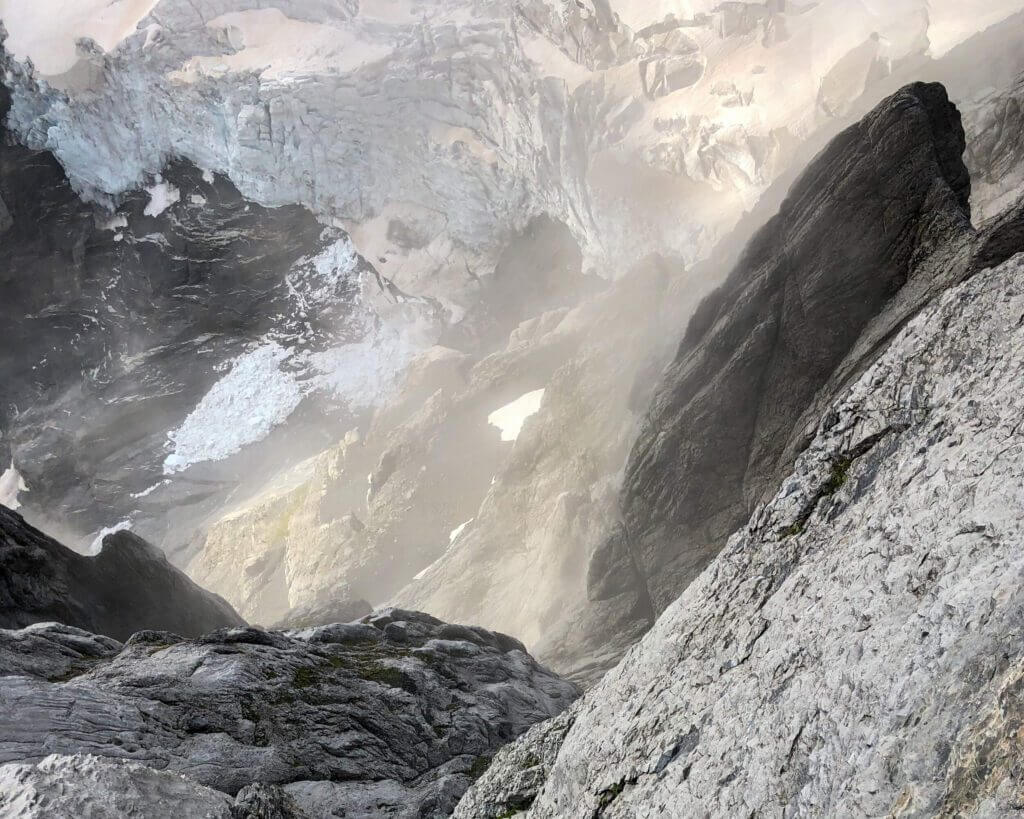
Second half:
I reached the Mittellegi hut at 9.45 am and was welcomed inside by Mirjam, the warden, who returned to drying a few leftover glasses from breakfast.
Fumbling along with the little German I could manage, I tried to buy some water. She explained there were no eftpos but offered me some leftover tea from breakfast. I was very grateful and filled up my Nalgene while we talked about her work as the hut warden and some of her friends that lived in New Zealand.
After the friendly encounter, I carried on for a few minutes. Then, with my warm tea and some fresh cheddar from work, I enjoyed a rest and studied the route ahead.
After the hut, the regular Mittellegi route starts. I followed the telltale scars from years of crampon use over and around the gendarmes and protruding rock that make up the ridge. Finally, after two hours of pleasant scrambling and fixed-rope jugging, I was at the icy summit ridge. I strapped on my crampons and took a small break at the top, taking some photos and admiring the peaks of the Berner Oberland, standing above the valley cloud, like bright, serrated islands.
Often, I’m left wanting more out of a climb, wishing it was a little harder or longer. But as I walked down the valley, saying hello to happy swiss cows and the occasional trail runner, I felt content with the day and pleased with my effort.
Glancing at my watch, my walk to the last train was brisk, then a jog, and finally a sprint to get the last train home! I had a short stop in a kiosk and grabbed an armful of sweets and ice cream, which I inhaled in minutes. As the train went around a bend, I saw the Eiger once again engulfed in its shield of clouds. I smiled and rested my head against the window, drifting off to sleep.
